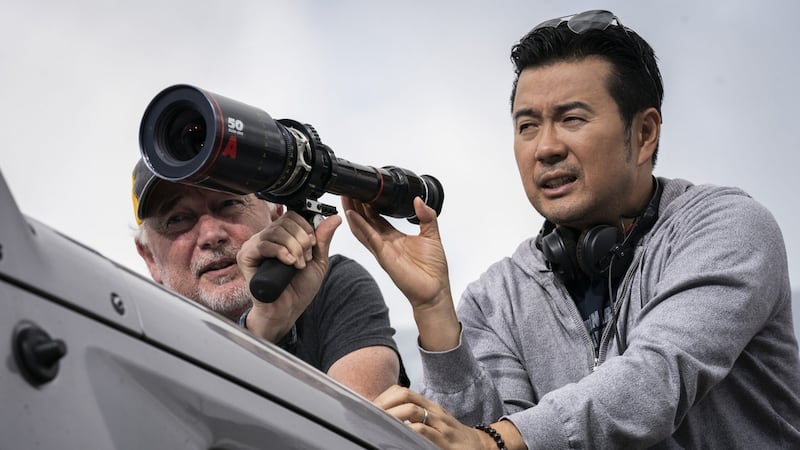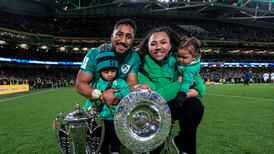A little less than 20 years ago, Better Luck Tomorrow, Justin Lin’s second film, landed to acclaim at the Sundance Film Festival. During the after-screening Q&A, someone berated the film-makers for presenting Asian-Americans in an unflattering light. Roger Ebert rode to the defence. “Asian-American characters have the right to be whoever the hell they want to be,” the great man bellowed.
This was still (just about) a golden period for American indie cinema. Lin, born in Taipei, raised in southern California, could have gone in any direction. Few, however, would have guessed he would end up juggling $200 million budgets on the industry’s most bizarre ongoing franchise. He is now directing his fourth film in the agreeably unhinged Fast & Furious series. Would the young Lin be surprised to find himself here?
“Um… yeah,” he says cheerily. “It was a credit-card movie. I could feel the 19.8 per cent interest rate every hour. I was just happy to be able to make one movie. It was an indie film. It was not deemed commercial. I felt fortunate that I was able to make a movie with a bunch of people who really cared about me and about what we were trying to say. If that had been it that would have been fine. But Sundance opened everything up. That led me on this journey – to make all these movies and TV shows. It is unbelievable what that unleashed.”
His follow up to Better Luck Tomorrow, the worthy Annapolis, was not a hit, but he managed to secure a gig directing the second sequel to a gritty, low-key car-chase movie that had been a modest success in 2001. The Fast and the Furious: Tokyo Drift expanded the brief a little, but it was Lin’s terrific Fast Five that pushed the franchise beyond the stratosphere. The returns were breath-taking. Two of the episodes have made more than a billion dollars.
Now Lin is being tasked with saving cinema. As the world moves out of lockdown, Fast & Furious 9, originally scheduled for last summer, is expected to bring the hordes back before the biggest screens. No pressure.
“Well, I think with any film you feel pressure,” he says. “But I don’t feel like there’s added pressure. I felt a lot of support. During the pandemic, you start seeing films getting released on streamers. But we make these movies so that everyone can go to the cinemas – with their family or friends – to cheer and laugh together with a bunch of strangers. That is what I love about cinema. So, when we talked about what should we do, I think it was very clear that we should wait it out. Let’s make sure it’s safe. So that we can do that. I feel so happy to be talking to you – because it means that we’re now much closer to that. We’re closer to that simple act of just saying: ‘I’m going to the movies.’”
Diverse cast
Lin and his team can already claim a degree of success. On its initial release in eight countries F9 scored, with $163 million, the highest opening weekend for a Hollywood film since the pandemic began. The lesson seems to be that the larger franchises can still survive in cinemas. But what about the smaller projects? Is the game up for mid- and low-budget films at the theatrical box office?
“I hope not,” he says. “I love the big budget films and I feel like they are going to be okay. When I was in film school, I enjoyed going to the independent cinemas. I loved that sense of discovery in liking a film. Maybe you don’t like a film, but you give it a chance. I wonder if that kind of engagement has been lost. But I do have hope. I think that film-makers want to make a movie because they want to share something. I hope we can find a way to be able to maintain that indie cinema.”
Here’s something else worth noting. While Hollywood got itself in justifiable twist about #OscarsSoWhite and the limited opportunities for women, one of the biggest franchises was calmly spreading the action around actors of colour and female performers. Was that a conscious decision or is that just how it works when you lay out a level playing field?

“When I started off in 2005 it was a very different time,” he says. “There is great talent around the world – why wouldn’t we look around the world? Why do we only look at LA and New York? I felt like it was just logical. I don’t think there was any malice. That was just how things had been done. So when I posed the question, they were like: ‘Let’s do that.’”
Gal Gadot from Israel has been in the series. Nathalie Emmanuel, British Game of Thrones alumnus, is in the current episode. Sung Kang is Korean-American. The Texan Michelle Rodriguez is from a Dominican and Puerto Rican background. And so on. You don’t get that degree of diversity in most Brooklyn-set mumblecore flicks.
“There was never a strategy on diversity,” Lin says. “It was all about opportunity. Let’s just set out a wide net and find talented, amazing people to join us. I love that.”
Planned or not, the Fast & Furious approach has conquered the universe. The new film will be as big a hit as changed circumstances will allow. In a few weeks it will play on the beach at the Cannes film festival. Maybe that’s where Lin thought he would end up after that Sundance premiere. Does it feel as if he is doing the same job?
“I think it’s up to you. It’s up to how you want the process to be,” he says. “I don’t want to waste the audience’s time. Even if I fail, I want to make sure I respect them enough to help them escape or connect emotionally. I don’t want to ever lose that. It’s not worth it.”
Fast & Furious 9 opens on June 24th












